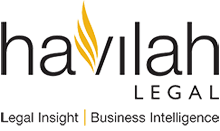“Intellectual Property” (IP) is a collective term that describes a number of specific types of intangible rights. You cannot hold, touch or feel IP.
Intellectual Property is the application of your mind to develop something new or original. IP is also property, something that you own. It can be bought and sold, licenced, given away or left to a beneficiary in a Will. Just as you can buy, sell, or give away a car that you own, so to can you deal with IP.
The traditional types of IP are:
- Copyright, Patents,
- Trade Marks,
- Designs,
- Plant Breeder’s Rights,
- Circuit Layout Rights and;
- Trade Secrets.
Collectively these different types of intangible rights form the intellectual property regime.
Copyright
Copyright protection is automatic, which means that you do not need to register or pay for your right to make a copy. However, copyright does not protect your idea, it only protests the expression of your idea. If another person expresses your idea, then copyright in their original expression belongs to them.
Copyright is the “right” to make a “copy”. If you are not the copyright owner, it is unlawful to make a copy of what ever is the subject of the copyright.
Typical examples where Copyright applies includes, literary, dramatic, musical, and artistic works, books, songs, television broadcasts and computer programs.
Copyright infringement has been thrust into the spotlight recently with iiNet (in conjunction with a number of other Australian internet suppliers) being involved in a legal battle with the Dallas Buyers Club LLC who alleged that over 4,000 Australian infringed on their copyright by illegally downloading the Dallas Buyers Club movie.
Another example of copyright infringement in Australia involved the Men at Work recording of “Down Under”. Twenty-eight years after its release, Larrikin Music alleged that part of the flute riff of “Down Under” was copied from the famous “Kookaburra” song.
In February 2010, Justice Jacobson ruled that Larrikin’s copyright had been infringed because “Down Under” reproduced “a substantial part of Kookaburra”.
Patents
A Patent is a legally enforceable right to commercially exploit a device, substance, method or process that is new, inventive and useful, for the life of the patent.
In exchange for this right, you are required to reveal publicly exactly how the invention works.
Patent rights are not automatic and must be registered. A patent application needs to be made and the applicable fees need to be paid. If granted, a patent is published for the whole world to see.
Patents are used to protect inventions in our everyday life for example cars, kitchen appliances, pens, beds, air conditioners, almost everything has been patented in some way.
A well-known example is Australian inventor Ric Richardson. Ric held multiple granted patents including the Uniloc patent. His patent was based on the machine fingerprinting technology which is used to stop copyright infringement. In 2009 Microsoft products Windows XP, Office XP, and Windows Server 2003 were found to infringe the Uniloc patent and Ric Richardson was awarded US$388 million in a patent infringement action against Microsoft.
Protecting your Intellectual Property
Confidentiality agreements should be in place and signed by every employee who has knowledge of commercially sensitive information to prevent them from disclosing such information to other parties both during and after their employment.
Avoid infringing another parties’ IP
Unintentional infringement can be expensive and time consuming. To avoid having to remedy an infringement of another parties’ IP be sure to conduct comprehensive searches before commencing Research and Development or manufacturing a new product to check that it hasn’t already been developed, registered and protected.
In next months newsletter we will consider trademarks, designs and trade secrets in more detail.
Should you have any queries in relation to intellectual property, please don’t hesitate to contact Ian McLennan.

